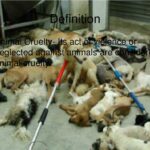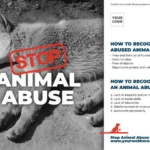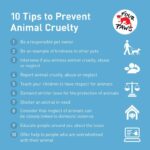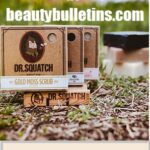In a world captivated by all things beautiful, a troubling undercurrent exists: the practice of animal testing in the cosmetic industry. Millions of consumers remain oblivious to the grim realities behind the allure of their favorite beauty products. What constitutes animal cruelty in makeup? It encompasses a spectrum of distressing practices that harm countless animals for the sake of vanity. The ethos of beauty must be scrutinized and redefined to prioritize compassion over cruelty.
Animal cruelty in makeup manifests primarily through the testing procedures used to evaluate the safety of cosmetic products. Such procedures are conducted on various species, including rabbits, mice, and guinea pigs, subjected to horrific conditions. These sentient beings endure painful experiments—often without pain relief—that may result in extreme suffering, disfigurement, or even death. Such practices beg the question: at what cost do we pursue beauty?
The European Union, in a groundbreaking move, banned animal testing for cosmetic products in 2013. However, many countries, including China, still mandate animal testing for cosmetics sold within their borders. This regulatory negligence highlights the complexity of global markets and the ethical considerations that unfortunately take a backseat to profit. For consumers, the challenge lies in discerning which brands align with ethical principles and which perpetuate the cycle of animal suffering.
For some, the allure of luxury cosmetics translates into a blindness to the ethical implications of their choices. The paradox lies in the perception of beauty as a form of empowerment, juxtaposed against the oppression of innocent creatures. Many animal advocates argue that the fascination with these products reveals a deeper societal flaw—an obsession with appearance that often overshadows moral considerations.
Despite the alternatives available today, the beauty industry surprisingly remains rife with brands that continue to employ archaic testing methods. A significant observation is that cosmetic companies still testing on animals often market their products vigorously, presenting glossy media images that mask the ethical dilemmas inherent in their operations. This highlights a critical issue: the marketing prowess of these brands can convince ignorant consumers to overlook the dark side of their beloved products.
Another dimension to consider is the role of corporate responsibility. Some brands have embedded ethical considerations into their missions, proudly labeling themselves as “cruelty-free.” However, the term lacks a standardized definition, leading to consumer confusion. Various certifications exist, yet not all are created equal. Some brands exploit this ambiguity to appeal to compassionate consumers while continuing practices that may not be genuinely ethical. This exploitation of linguistic nuances creates an environment of mistrust.
Furthermore, the psychological attachment consumers form with specific beauty brands complicates the discourse. Many people equate their identity, self-esteem, and confidence with the products they use, thus rendering them resistant to change even when faced with information about animal testing. This emotional entrenchment raises questions about the lengths individuals will go to in order to retain their perceived beauty standard, even at the potential expense of other lives. It invites a re-evaluation of beauty norms and the ethical responsibilities accompanying them.
In stark contrast to mainstream brands, a burgeoning movement of indie and cruelty-free brands emphasizes compassion and sustainability. These companies have arisen as bastions of ethical production, often prioritizing transparency about their sourcing and testing methods. Their commitment to producing beautiful products without harm to animals is both commendable and necessary. This segment of the market is not only gaining traction; it serves as a critical reminder that beauty does not necessitate suffering.
Moreover, consumer behavior plays a pivotal role in shaping industry standards. Informed and conscientious purchasing decisions can propel brands towards ethical practices. The more consumers demand cruelty-free products, the more companies will adapt to meet these expectations. This transformative potential of consumer activism advocates for a future where beauty is no longer synonymous with cruelty.
Education and awareness are paramount in this fight against animal cruelty in makeup. Social media platforms serve as valuable tools to disseminate information about brands that engage in inhumane practices. Advocacy groups use these channels to drive conversations, share resources, and empower consumers with knowledge. Such efforts aim to cultivate an informed public capable of advocating for both beauty and ethical integrity.
The urgency of this message cannot be overstated. We stand at a crucial juncture where consumer power can catalyze significant change within the beauty industry. Addressing the common observation of beauty as an all-consuming fascination, we must confront the uncomfortable truths that lie beneath the surface of glossy advertisements and enchanting packaging.
Ultimately, animal cruelty in makeup is not merely an oversight; it is a systemic issue that requires collective attention. By rejecting brands that continue these abhorrent practices and amplifying the voices of those pushing for change, individuals can help reshape an industry that has for too long prioritized looks over lives. The journey towards a cruelty-free future is not only possible; it is essential for the integrity of the beauty landscape we aspire to create.
In conclusion, let us foster a culture where beauty embodies empathy, understanding, and respect for all living beings. Every choice we make in the realm of cosmetics reverberates beyond our own reflection, influencing the lives of countless animals and the ethical fabric of society. The time to unveil the truth is now. Only then can we redefine beauty on our own terms—terms that firmly advocate against cruelty.








